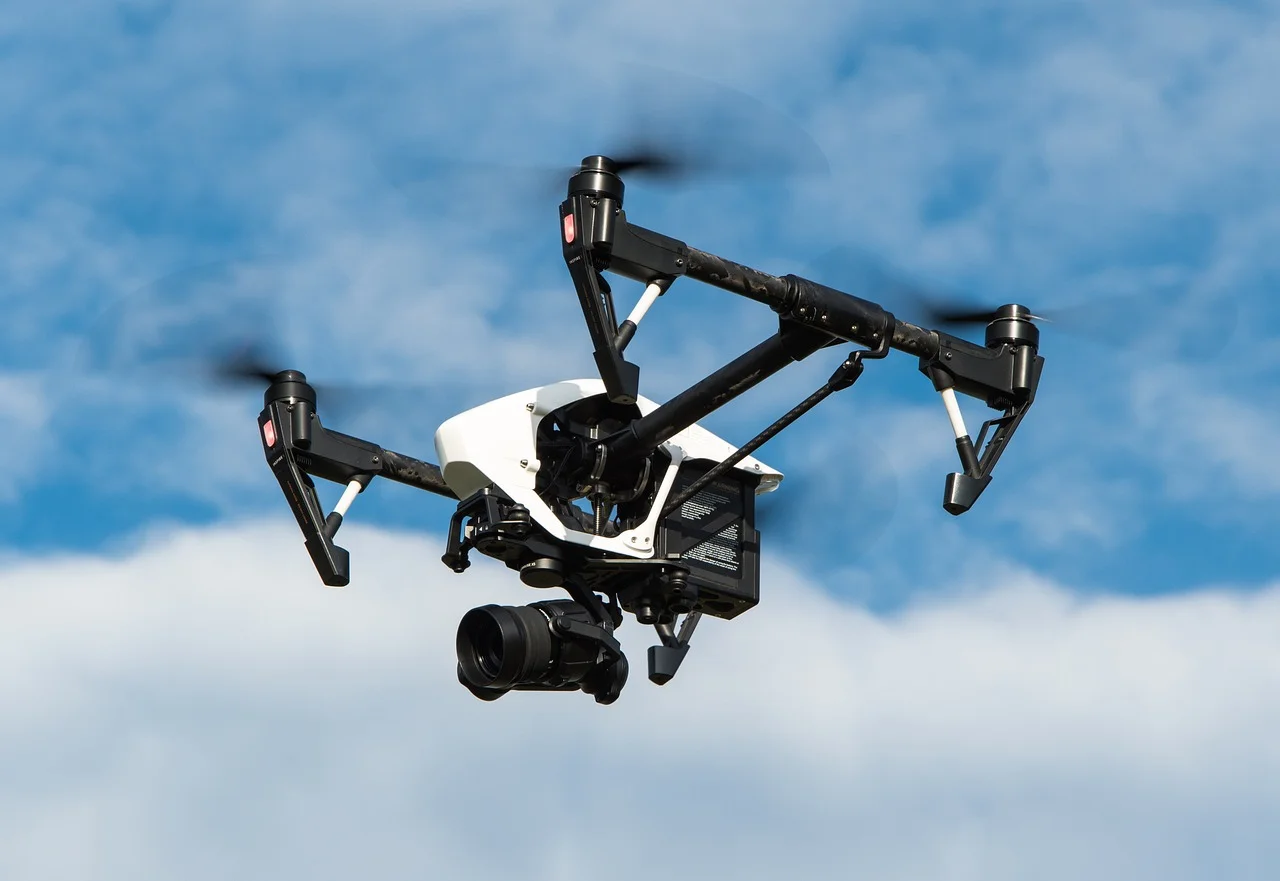In the delicate dance between nature and agriculture, few creatures play a role as crucial as the honeybee. These industrious insects, responsible for the pollination of countless flowering plants, contribute immeasurably to the biodiversity and productivity of our ecosystems. Beyond their ecological significance, honeybees gift us a golden elixir – honey – a sweet nectar that has been cherished by civilizations throughout history.
Embarking on the journey of beekeeping is more than just a venture into the world of apiculture; it’s an immersion into a symbiotic relationship with one of nature’s most fascinating creatures. This comprehensive guide aims to equip both novice and seasoned beekeepers with the knowledge and skills needed to nurture thriving bee colonies, harvest golden honey, and contribute to the well-being of our planet.
Join us as we delve into the art and science of beekeeping, exploring the steps from setting up your first hive to understanding the intricacies of bee behavior, handling seasonal challenges, and reaping the sweet rewards of your efforts.
Importance of bees in agriculture and ecosystems
Ever marveled at how a flower transforms into a juicy fruit or a vibrant vegetable? Well, you can thank the magical dance of pollination – a process where our buzzing buddies, the bees, play the role of matchmakers between flowers, making the whole natural world a lively and flavorful affair.
It all starts with a bee on a mission. Hungry for nectar, our bee friend bounces from flower to flower, sipping up the sweet liquid. As it moves, tiny pollen grains stick to its fuzzy body. While enjoying the nectar feast, the bee unintentionally picks up pollen from the male parts of the flower (stamens). Picture this pollen as nature’s version of magical dust that holds the key to creating more plants.
Now, here’s where the flower gets clever. It needs help to make seeds and reproduce, and that’s where the bee steps in. As our bee continues its nectar expedition, it visits another flower, transferring some of that magical pollen to the female part (pistil) of the new flower. Once the pollen reaches the female part, it’s like nature’s cue for the flower to start producing seeds. This seed-making magic is what allows plants to reproduce and grow the fruits and veggies we love. Imagine each pollen transfer as a tiny seed superhero ensuring the next generation of plants.
The result? A diverse array of fruits, vegetables, and seeds. Each bee visit contributes to the rich tapestry of our food supply, creating a world of flavors and colors.
So, the next time you bite into a crisp apple or savor the sweetness of a strawberry, take a moment to appreciate the intricate choreography of pollination. It’s a dance orchestrated by bees, making sure our gardens, farms, and wild spaces burst with life and deliciousness. Hats off to the bees – the unsung heroes behind the scenes of nature’s sweetest productions!
Understanding Bees
Beekeeping isn’t just about having a hive; it’s about getting to know the fascinating inhabitants of that buzzing community. Let’s take a closer look at the different roles bees play, their behaviors, and the captivating life cycle that unfolds within the hive.
Different types of honeybees
- Worker Bees: Worker bees are the backbone of the hive. They’re all female and take on various tasks like foraging for nectar, pollen collection, hive cleaning, and nursing the young. These industrious ladies are the ones you’ll see zipping around your garden and, of course, making that sweet honey.
- Drones: Drones are the male bees in the colony. Their primary purpose is to mate with a virgin queen from another colony. Drones don’t contribute to hive chores like gathering food or building comb. While they might seem like the slackers of the hive, their role in reproduction is crucial.
- Queen Bee: The queen bee is royalty in the bee world. She’s the only fertile female in the colony and lays all the eggs. Her pheromones regulate the hive’s activity, and her sole focus is on laying eggs to ensure the hive’s survival. Long live the queen!
Bee Behavior
Bees are excellent communicators. Through dances and pheromones, they convey information about the location of food sources, potential threats, and even the need for a new queen. It’s like a secret language that keeps the hive in sync.
Teamwork makes the dream work in a beehive. Worker bees collaborate seamlessly, each contributing to the hive’s well-being. From nursing the brood to defending the hive, their teamwork is a marvel of nature.
Bees are expert architects. They build the hexagonal cells of the hive with precision, creating an efficient space for storing honey, pollen, and raising brood. They also regulate the hive’s temperature by fanning their wings or clustering together to generate heat.
The Circle of Life
The life cycle of a honeybee is a captivating journey. It starts with an egg laid by the queen, which hatches into a larva. The worker bees feed and care for the larva until it pupates and eventually emerges as an adult bee ready to take on hive duties.
Queens embark on a special mating flight, where they mate with multiple drones from other colonies. After mating, the queen returns to the hive and starts laying fertilized eggs, which become worker bees, or unfertilized eggs, which become drones.
When a hive becomes overcrowded, a fascinating event called swarming occurs. A new queen is raised, and the old queen, along with a group of worker bees, leaves the hive to establish a new colony. It’s a natural way for the hive to reproduce.
Getting to know the roles, behaviors, and life cycle of bees adds a layer of appreciation to the art of beekeeping. It’s a small world buzzing with teamwork, communication, and the wonders of nature.
Beekeeping Seasons in India
Beekeeping in India is a vibrant journey that harmonizes with the changing seasons. Understanding the nuances of each season is key to successful apiculture. Let’s explore the beekeeping calendar in the Indian context and how you can best support your buzzing companions throughout the year.
Spring (March to May):
Spring is the season of abundance for bees. With blooming flowers and trees, nectar and pollen become plentiful. This is the time when your bees will be actively foraging and collecting resources to build their hive. Spring is regarded as the optimal time to commence Apiculture since it marks the onset of plant flowering.
Conduct thorough hive inspections in spring. Check for signs of swarming, ensure the queen is laying eggs, and assess the overall health of the colony. If necessary, provide additional space for the growing bee population.
Summer (June to August):
Indian summers can be intense, and bees need help staying cool. Ensure your hives are shaded, and provide a water source near the hive. Bees use water to cool the hive through evaporation, a crucial strategy for temperature regulation.
Set up watering stations with shallow dishes filled with water and pebbles. This helps prevent bees from drowning while quenching their thirst.
Monsoon (September to November):
Monsoon brings fluctuating weather conditions. While the rains are beneficial for the flora, excessive moisture can pose challenges for beehives. Ensure proper hive ventilation to prevent moisture buildup.
Monitor your hive closely for signs of diseases, especially during the humid monsoon season. Adequate ventilation and hive management can mitigate the risk of issues like fungal infections.
Autumn (December to February):
As temperatures drop, bees start preparing for winter. Ensure your bees have enough honey stores to sustain them through the cooler months. Conduct a final hive inspection before winter sets in.
If honey stores are low, consider supplemental feeding. Provide sugar syrup or fondant to ensure the bees have sufficient food to last through the winter.
General Tips for Indian Beekeepers:
- Selecting Bee Varieties: Choose bee varieties that are well-adapted to the Indian climate, such as the indigenous Apis cerana or the European Apis mellifera.
- Water Management: Be mindful of water availability, especially during hot seasons. Bees need water not just for cooling but also for diluting honey for consumption.
- Local Flora Knowledge: Familiarize yourself with the local flora and its flowering patterns. This knowledge helps you anticipate when resources will be abundant for your bees.
Honey Bee Species in India
In the world, there are approximately 20,000 bee species, but only seven of them fall under the category of honeybees. Among these, only five hold commercial significance in India. These five species are as follows:
The Indian hive bee (Apis cerana indica)
The Indian Hive Bee, scientifically known as Apis cerana indica, stands as a domesticated species that differs in behavior from constructing a singular comb. Instead, they create distinct parallel combs, each colony averaging a honey yield of 6-8 kilograms annually. These honey bees are larger than Apis florea (Little Bee) but smaller than Apis mellifera (European or Italian Bee). Indigenous to India and Asia, they exhibit characteristics unique to their local habitat.
The rock bee (Apis dorsata)
The Giant Honey Bee, scientifically known as Apis dorsata, represents a larger Himalayan subspecies prevalent in sub-mountainous regions across India. Rock bees, as they are commonly referred to, pose a challenge in terms of domestication due to their aggressive nature. They construct a singular comb, typically situated in an open space, measuring approximately 6 feet in length and 3 feet in depth. Despite their formidable temperament, these bees yield an impressive honey output, generating around 36 kilograms of honey per comb annually.
The European or Italian bee (Apis mellifera)
The European or Italian Bee, scientifically labeled Apis mellifera, shares a similarity with Indian bees in constructing parallel combs and boasts a larger size compared to all other honeybee species except for the rock bees. These bees typically yield an average honey production of 25-40 kilograms per colony each year. Originally imported from European countries, notably Italy, they have become a notable presence in apiculture.
The little bee (Apis florea)
The Little Bee, scientifically identified as Apis florea, is characterized by the construction of singular vertical combs. In addition, these bees create combs openly, roughly the size of a palm, on branches of shrubs, supports, structures, caverns, and other locations. Their honey production per hive averages around half a kilogram each year.
Dammer bee or stingless bee (Tetragonulairidipennis)
The Dammer Bee, also known as the stingless bee (Tetragonula iridipennis), is notably smaller than conventional honey bees, yet holds importance in the pollination of various food crops. While capable of domestication, these bees have a modest honey yield per hive, amounting to just 100 grams annually.
Beekeepers have the option to domesticate any of these bee species within artificial hives. However, in India, the species most frequently employed for commercial endeavors are the Indian Bee and the Italian Bee. Indian beekeepers have specifically tamed these species to achieve high yields in honey production, along with obtaining other valued products like royal jelly, beeswax, propolis (bee glue), bee venom, bee pollen, and more.
Beekeeping Equipment
Embarking on a beekeeping adventure requires the right set of tools to ensure a successful and smooth journey. Here’s a breakdown of the essential beekeeping equipment every enthusiast needs:
Beehive
The hive, a human-crafted enclosure employed by beekeepers to house honey bees, is commonly constructed from wood, although alternative materials such as plastic or polystyrene are also utilized.
The standard dimensions for a deep hive body typically measure 19 7/8″ in length, 16 1/4″ in width, and 9 5/8″ in height. Given the substantial weight that a deep hive body attains when filled with bees, honey, and pollen, many beekeepers opt for medium-sized supers as hive bodies to facilitate handling.
Common types include Langstroth, Top Bar, and Warre hives. Choose one that aligns with your preferences and beekeeping goals.
Frames
Frames, resembling rectangular shapes, are suspended within a hive, forming a sort of filing system. Honey bees utilize these frames to construct their comb, the space where they produce honey, lay brood, and consistently prepare for the upcoming winter season.
Smoker
The bee smoker stands as a crucial component in a beekeeper’s toolkit. Absent the smoker, beekeepers would likely face a greater number of stings during hive inspections. These uncomplicatedly designed smokers serve the purpose of calming bees when a beekeeper needs to work within the hive. The smoke emitted by the smoker tricks honey bees into believing that their hive is in danger of a fire. In response, honey bees instinctively prepare for a potential relocation by consuming honey, ensuring they have sufficient food reserves for an extended journey. The heightened consumption of honey induces a state of temporary lethargy in the honey bees.
Feeder
A feeder, employed by beekeepers, is a container or device used to provide honey bees within a colony with pollen, honey, or substitutes such as a sugar and water mixture. During certain seasons when either growth has halted or is awaiting blossoming, your honey bees may require assistance in supplementing their food supply.
Bee Suit and Veil
Beekeeping involves getting up close and personal with your buzzing friends, and protective gear is a must. A bee suit, complete with a veil, gloves, and boots, safeguards you from stings while ensuring a secure beekeeping experience.
Hive Tool
The multitool of beekeeping, the hive tool is essential for prying open hives, separating frames, and scraping off excess wax and propolis. A versatile instrument that simplifies various hive management tasks.
Queen Catcher
A delicate tool to isolate the queen during hive inspections. The queen catcher allows for careful examination or relocation without causing harm.
Queen Excluder
Placed between hive boxes, a queen excluder prevents the queen from accessing honey supers. This ensures that honey intended for harvest remains free of brood.
Bee Brush
A gentle tool to sweep bees off frames and hive components during inspections. Soft bristles help avoid harm to the bees while keeping your workspace clear.
Honey Extractor
This device extracts honey from frames without damaging the comb. Spin the frames in the extractor to release honey, preserving the comb for the bees to reuse.
Hive Stand
Elevate your hive with a sturdy stand. This not only provides a stable foundation but also helps prevent waterlogging and protects the hive from pests.
Choosing the right location for Beehives
Sun Exposure
Bees thrive in sunlight. Select a location that receives plenty of sunlight throughout the day. Aim for a spot with morning sun exposure, as this helps dry the dew on the hives, reducing the risk of moisture-related issues.
However, given the ample sunlight in India, prioritize a location with generous sun exposure. Ensure there’s adequate shade available, especially during the peak heat of the day. This helps regulate hive temperatures and prevents overheating.
Shelter from the Wind
While sunlight is vital, excessive wind can be detrimental. Choose a location with some natural windbreaks, such as shrubs, trees, or fencing. This provides a more stable environment for your bees, especially during colder seasons.
Accessibility
Ensure easy access to your beehives. A well-maintained path leading to the hives allows for smooth hive inspections, maintenance, and honey harvesting. Keep in mind that you’ll need space to maneuver around the hives comfortably.
Water Source
Bees require water for various activities, including cooling the hive and diluting honey for consumption. Choose a location close to a clean and reliable water source, such as a pond, stream, or water trough.
Proximity to Forage Areas
Bee colonies need abundant forage areas to thrive. Opt for a location near diverse flowering plants, trees, and crops. This ensures that your bees have access to a variety of nectar and pollen sources.
Local Regulations
Check local regulations and zoning laws related to beekeeping. Some areas may have restrictions on hive placement, so it’s essential to comply with local guidelines.
Consider Neighbors
Be mindful of your neighbors. While bees are generally docile, placing hives away from areas frequently used by others helps prevent accidental encounters. Communicate with neighbors about your beekeeping plans to foster understanding.
Elevated Ground
Choose a slightly elevated spot for your beehives. This helps prevent waterlogging during heavy rains and promotes better drainage.
Adequate Ventilation
Good air circulation is essential for hive health. Avoid placing hives in low-lying areas prone to stagnant air. Elevated locations with proper ventilation contribute to a healthier hive environment.
Honey Bee Products and their Market Price
Many of us may not be aware that honey is not the sole product produced by honey bees. In addition to honey, farmers obtain various other valuable products from honey bees, including Bee Wax, Royal Jelly, Propolis or bee glue, Bee Pollen, and Bee venom. These products hold significant benefits for humans and command high prices in the market. Let’s briefly explore these products and their market value.
Honey
Dabur, India’s highly regarded brand, offers honey at Rs 395 per kilogram. Patanjali honey by Baba Ramdev is priced at Rs 275 per kilogram, while Apis Himalaya sells 2 kilograms of honey for just Rs 366, and so forth. While a few organic honey variants are priced higher, the majority are readily available for under Rs 1000 in both physical markets and on various e-commerce platforms.
Bee Wax
A genuine organic wax produced by honey bees, beeswax has an average market price ranging from Rs 300 to 350 per kilogram. Not only is it edible, but it also finds versatile applications as a lubricant, waterproofing agent, and in the production of various items such as candles, shoe polish, cosmetics, crayons, metal casting, vehicle and floor polish, varnish, gum, carbon paper, electrical appliances, fabric industry, and in food processing and packaging.
Pollen
The average price of bee pollen in the Indian market hovers around Rs 1250 per kilogram, subject to variations based on its quality. A beekeeper can collect approximately 25 grams of pollen daily from a single colony.
While honey is undoubtedly a key product of honey bees, beekeepers also benefit from these additional products, enhancing their overall income.
Bee Venom
As a natural product possessing significant medicinal value, the cost of bee venom in Indian markets ranges from Rs 10,000 to Rs 12,000 per gram. The pricing may vary for exceptionally high-quality bee venom, considering factors such as production costs, packaging, manufacturers’ expenses, analysis fees, dealer’s commission, and other relevant aspects.
Royal Jelly
Employed in medicine, beauty products, and as a dietary supplement, royal jelly exhibits varying costs from Rs 4,000 to 5,000 per kilogram, reaching Rs 1.5 lakh to 1.8 lakh if processed or frozen. Indiamart offers processed Royal Jelly at Rs 1.5 Lakh per kilogram. Approximately half a kilogram of royal jelly can be extracted from a hive annually.
Propolis
Another noteworthy product from honeybees, propolis finds applications in both human and veterinary medicines. Its price ranges from Rs 500 to Rs 2,000 per kilogram.
Training Centers for Honey Beekeeping in India
Arya Gramodyog Sansthan, Delhi
Arya Gramodyog Sansthan, located in Delhi, is a non-governmental organization registered with the National Bee Board. The organization conducts a 7-day training program on Bee-Keeping tailored for farmers, beekeepers, and unemployed youth.
Bharat Honeybee Centre training Program (Avinissery, Thrissur, Kerala)
The training program at Bharat Honeybee Centre in Avinissery, Thrissur, Kerala, stands as the sole institution in India providing a complimentary one-year certificate course in beekeeping, encompassing 45 practical classes. Many individuals who completed the course at this institute are currently active in the beekeeping industry.
IGNOU
IGNOU provides a “Certificate in Bee Keeping (CIB)” program with a minimum duration of 6 months and a maximum duration of 2 years. The fee for the course is Rs 1,400, and eligibility requires a minimum qualification of 8th pass.
Sahara GramudyogSansthan, Saharanpur (U.P)
Sahara Gramudyog Sansthan, located in Saharanpur, Uttar Pradesh, is a registered entity with the National Bee Board, offering training programs for both farmers and beekeepers.
Khadi and Village Industries Commission
The Khadi and Village Industries Commission provides training programs catering to beginners, farmers, beekeepers, and wild honey collectors. Recognized globally, this institute stands as one of the premier centers for beekeeping in India.
National Beekeeping & Honey Mission
The Ministry of Agriculture, now rebranded as the Ministry of Agriculture & Farmers Welfare, Government of India, established the National Bee Board on July 19, 2000. The primary objective of the NBB is the comprehensive advancement of beekeeping by advocating scientific practices in India. This aims to enhance crop productivity through pollination and boost honey production to augment the income of beekeepers or honey farmers. Additionally, the board actively supports the beekeeping, honey, and other bee product industry in the country, overseeing both domestic and export markets for honey and related products. The Board is empowered to initiate or endorse State Bee Boards in major beekeeping states to synchronize the Board’s initiatives within their respective regions.
Meanwhile, the Indian government has sanctioned a fresh central sector program spanning the years 2018-19 and 2019-20 known as the “National Beekeeping & Honey Mission (NBHM)” for a duration of two years. This initiative is geared towards the comprehensive advancement and promotion of scientific beekeeping, aligning with the mission to accomplish the “Sweet Revolution” in the nation. The program emphasizes capacity building and training, with a special focus on women, and provides input support for promotion and production. It includes the establishment of Integrated Beekeeping Development Centers (IBDCs), development of other necessary infrastructure, digitization or online registration, honey processing, value addition, market support, and more.
Loans and Subsidy for the Beekeepers in India
- If someone wishes to venture into beekeeping in India, the government is prepared to offer assistance. Various boards have been established by the government to provide support and guidance to bee farmers, with the National Bee Board (NBB) being a prominent entity. Numerous beekeepers have derived benefits from the schemes and loans offered by the NBB. Additionally, the National Bee Board conducts training sessions for individuals interested in pursuing a beekeeping business.
- The government extends a 35% subsidy to the apiculture business in India. Reserved category candidates are required to contribute 5% from their personal funds. Under the Prime Minister Employment Scheme, individuals who may not meet educational qualifications could receive up to Rs 10 lakh to initiate beekeeping as a full-time business.
- IDBI Bank is a notable financial institution in India that facilitates loans for commercial beekeeping, referred to as ‘Bee Keeping Madhu Makshika.’ This loan option is available to both farmers and non-farmers. The sanctioned loan amount is intended exclusively for establishing units dedicated to honey production. Beekeepers can avail subsidies for this loan through government bodies such as DRDA, KVIC, and KVIB. Repayment of the loan is expected within 5 to 7 years, with the flexibility of quarterly or half-yearly installments based on the borrower’s preference. Additionally, Self-Help Groups (SHGs) and Non-Governmental Organizations (NGOs) are eligible to apply for this loan. IDBI Bank provides an 11-month gestation period for this particular loan.
- Canara Bank is extending loans for beekeeping (apiculture) in accordance with the bank’s guidelines. For specific details regarding the loan, direct contact with the bank is recommended.
- Punjab National Bank (PNB) provides beekeeping loans specifically tailored for trained small and marginal farmers, as well as agricultural laborers. The repayment period for this loan, encompassing the gestation period, is capped at a maximum of 5 years.
- The Punjab State Co-operative Agricultural Development Bank also extends loans for beekeeping or apiculture. Individuals possessing beekeeping experience are eligible to apply for this loan, and if necessary, the Punjab Agricultural University offers training. Insurance is mandatory, and the repayment period for the loan is set at 5 years. Individuals can commence with a minimum of 10 boxes, and loans are disbursed in accordance with the bank’s established guidelines.
Beekeepers’ Insurance Policy by NBB
To ensure social security for beekeepers, the General Committee of the National Bee Board offers a group insurance policy to all beekeepers enrolled with NBB. NBB has collaborated with IFFCO-TOKIO General Insurance Co. Ltd. to furnish the Janata Personal Accident Policy for beekeepers associated with NBB.









